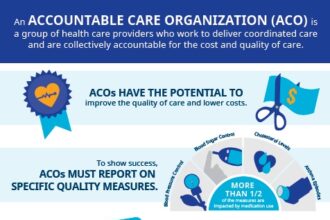Since becoming a father last year, I’ve started to take more of an interest in LEGO®. My son is still a little young for even Duplo LEGO, at 11 months old, but I do spend more time in the toy section of our local department store, which is absolutely dominated by a vast array of colourful items built using these little plastic bricks.
Since becoming a father last year, I’ve started to take more of an interest in LEGO®. My son is still a little young for even Duplo LEGO, at 11 months old, but I do spend more time in the toy section of our local department store, which is absolutely dominated by a vast array of colourful items built using these little plastic bricks.
On first revisiting what was now available in the LEGO range I was absolutely staggered at how far it has moved on from what I remember as a child. Early memories of multi-coloured big bricks have been replaced by an enormous range of themed LEGO kits, encompassing all kinds of minute, bespoke components structured around various themes and targeted at different age ranges.
What really caught my attention is that LEGO has been incredibly smart at evolving, diversifying and re-inventing itself, and it makes me wonder if there are not one or two lessons for the pharmaceutical industry in their story.
For example, did you know that LEGO started out with wooden toys and it was only later that plastic bricks were introduced (with extremely muted initial reception)? If you have not already seen it, the animated story of LEGO’s history, embedded below, is well worth a watch.
The LEGO® Story, from the official LEGO YouTube channel
More recently, the Danish company has done an amazing job a reinventing itself to connect with a new generation of children, through tie-ins with popular films such as Star Wars and Lord of the Rings, plus expansion into areas such as video games. There is even a LEGO movie on the way, I believe!
Consider the parallels with the growth of the pharmaceutical industry and how it must also reinvent itself right now. Traditional medicines could be compared to the early LEGO toys – a limited range with more broad application. As the industry starts to move further into personalised medicine, an increasing range of more niche medicines are being developed that mirror LEGO’s expansion into multiple themes and sets, each targeting a very specific demographic.
“Traditional medicines could be compared to the early LEGO toys – a limited range with more broad application.”
So what can the pharmaceutical industry learn from how LEGO has branded itself?
Well, LEGO has certainly invested considerable time and money into building a strong brand, but the underpinnings of that come from a deep understanding of what its customers want and ensuring the products delivered against that demand were of the highest quality. It has also faced, like pharma, a diverse stakeholder group with which to engage. Children may be the ultimate customer, rather like patients, but it has to get the parents on board – the payers and prescribers in our world – in order to be successful. As a parent, I know that LEGO is not only going to be enjoyed by my child but will also help them develop. If they are going to play video games, or watch movies, I would probably rather it was a LEGO one because it might stimulate some physical play too. Parallels with health outcomes perhaps?
But perhaps LEGO’s smartest move has been to align itself with other brands and channels that are seen as valuable to its customers, such as developing film-themed ranges that connect with today’s movie-going kids, or building a video game franchise as children spend more time playing electronically rather than physically. Perhaps here there are lessons on how the pharma industry could engage with patients and other healthcare stakeholders?
There are distinct parallels here, in my opinion, with how the pharmaceutical industry is pursuing more collaborative research and commercialisation processes, from academic partnerships in the pre-clinical stage right through to joint working initiatives aligned with local healthcare providers, patient groups and charities further down the line.
“Maybe, like inquisitive children, it’s time to break the pharma model down and rebuild it brick by brick.”
There are also similarities to how pharma needs to progress ‘beyond the pill’. I am sure that LEGO set out into the video games and movies sector with an objective of increasing sales of its plastic bricks, but these have developed into powerful franchises in their own right, revitalising sales in a way that could perhaps not have been anticipated. Where LEGO got this right, was to have the courage to run with it, rather than get stuck with its traditions. At the end of the day, it still fell within its core objective of helping children play and learn.
As the pharma industry therefore moves into broader services to support healthcare systems and patients, it should not be afraid of going with the flow, even if it does not directly link back to the medicines that form its core business. If what it ends up doing helps patients as much, or more, as the drugs do then it will also be good for its brand. As new technologies increasingly dominate the healthcare space it cannot ignore the opportunity.
We like to think the market issues and current challenges faced by pharma are unique. I’m not so sure that is true – if we look around there are plenty of examples like LEGO that our industry can learn from. Maybe, like inquisitive children, it’s time to break the pharma model down and rebuild it brick by brick, without our adult preconceptions.
Until next month, keep playing around with those new ideas, and stay well.







_7-250x220.jpg)